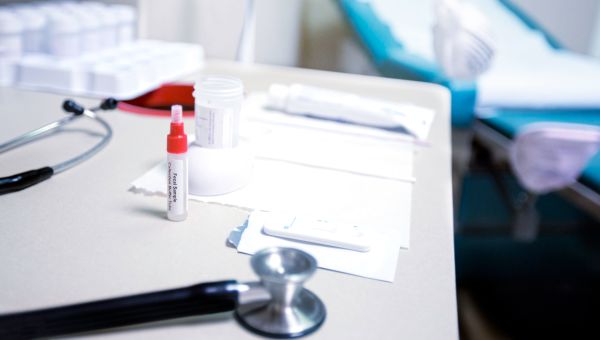How Often Do You Really Need a Pap Smear?

Some 93 percent of cervical cancers could be prevented through HPV (human papillomavirus) vaccination and screenings, including regular Pap tests (also known as Pap smears), which help doctors detect and treat unhealthy cells before they become cancerous or spot cancers early when they’re more effectively treated.
As a result, the number of women being diagnosed with cervical cancer or dying from the disease has dropped dramatically over the past few decades. After age 45, though, screening rates steadily decline as women get older, according to a November 2019 analysis of three large national surveys led by the University of Michigan Rogel Cancer Center. This is concerning since the National Cancer Institute reports that more than 60 percent of all cervical cancers are diagnosed in women age 45 and older.
The University of Michigan research, which was published in the journal Preventive Medicine, also found lower screening rates among women with less education and those living in rural parts of the country.
In 2019 alone, it’s estimated that about 13,170 women will be newly diagnosed with invasive cervical cancer. More than 4,000 will die from the disease, according to the American Cancer Society. Most women diagnosed with cervical cancer had not been screened for it.
Whether you’re new to Pap tests, or you’ve been getting them for a while, it’s important to understand how often you need one, and how essential they are for your health and well-being. We talked to OBGYN Thomas Zarka, MD, of Parkland Medical Center in Derry, New Hampshire to learn the most important facts about Pap smears: how it’s done, risk factors that affect frequency and what it means if your test results are abnormal.
What is a Pap smear?
In a nutshell, a Pap smear is an in-office procedure that allows your gynecologist to clearly see your cervix and collect cells from it. From there, lab technicians study them under a microscope to see if any pre-cancerous or cancerous cells exist.
During the actual exam, your gynecologist will insert a metal or plastic speculum into your vagina to keep it open. Next, your doctor uses a small spatula to gently scrape the cervix for cells and mucus. After that, a cotton-tipped swab is inserted into the opening of your cervix to gather samples.
How often should you have one?
While cervical cancer recommendations vary slight from organization to organization, most gynecologists follow the pap smear guidelines set forth by the American College of Obstetricians and Gynecologists (ACOG) and US Preventive Services Task Force. How often you need one may depend on your age and health history. Here’s the basic breakdown:
- Women ages 21 to 29: Pap smear every three years
- Women 30 to 65: Pap smear and human papillomavirus infection (HPV) test every 5 years (continuing to have a Pap smear alone every three years or an HPV test every 5 years are also options, too)
So how does Zarka advise his own patients? “I recommend that the test be done every three years until the age of 65 and then, if you’ve have had three consecutive negative tests in a row and you don’t have a history of abnormal cervical cells, you don’t have to have them anymore.”
You and your gynecologist should discuss what’s best for you. More often than not, your gynecologist will use these interval recommendations because there is science to back them up, says Zarka.
You may need more frequent Pap testing if you’ve had abnormal Pap smears in the past, or if you have human immunodeficiency virus (HIV or AIDS), have had any organ transplants, or your mother took diethylstilbestrol (DES), a synthetic form of the female hormone estrogen, passing it to you in the womb.
An abnormal Pap isn’t always cause for worry
Zarka says that many women get upset if their Pap smear comes back abnormal, and he wants women to know that it does not necessarily mean that you have cancer. “In fact, because we have such a rigorous screening process in this country, cervical cancer really is a rare disease. We don’t see it very often.” According to the American Cancer Society, cervical cancer death rates have decreased by more than 50 percent in the last 40 years, thanks to this screening procedure.
So, what do your Pap smear results really mean? Typically, they are categorized into three types, based on a system called the Bethesda System (TBS). Here’s what the results indicate:
- Negative for intraepithelial lesion or malignancy: there are no signs of cancer, pre-cancer or other abnormalities, but other non-cancerous conditions may be present, such as a yeast infection or herpes
- Epithelial cell abnormalities: cells lining your cervix or vagina indicate there may be a cancerous or pre-cancerous condition present
- Other malignant neoplasms: Non-cervix related malignant conditions such as melanoma, sarcomas and lymphoma
You should still see your gynecologist every year
You may not need a yearly Pap smear, but don’t take it as a free pass to skip seeing your gynecologist. A yearly checkup is recommended by some, but not all, expert groups. At your yearly exams (whether it’s the year for your Pap smear or not), your gynecologist may perform a physical exam to check the health of your ovaries, uterus and breasts. Depending on your age, you may also discuss fertility issues, perimenopause or menopause symptoms.
Help ensure accurate results
Pap tests are the most well-known and effective method of detecting cervical cancer. Here are ways to ensure that your results are accurate:
- Avoid seeing your gynecologist for a Pap smear during your menstrual period. If possible, schedule it at least five days after your period ends.
- Refrain from using any products or medications that are inserted into the vagina two to three days before your test: this includes tampons, birth-control foams or gels and vaginal creams, lubricants and medications.
- Avoid douching, especially two to three days before your Pap smear.
- Abstain from vaginal sex two days before your Pap smear.
Sourcing: American Cancer Society, National Cancer Institute, Office of Women’s Health, UptoDate


